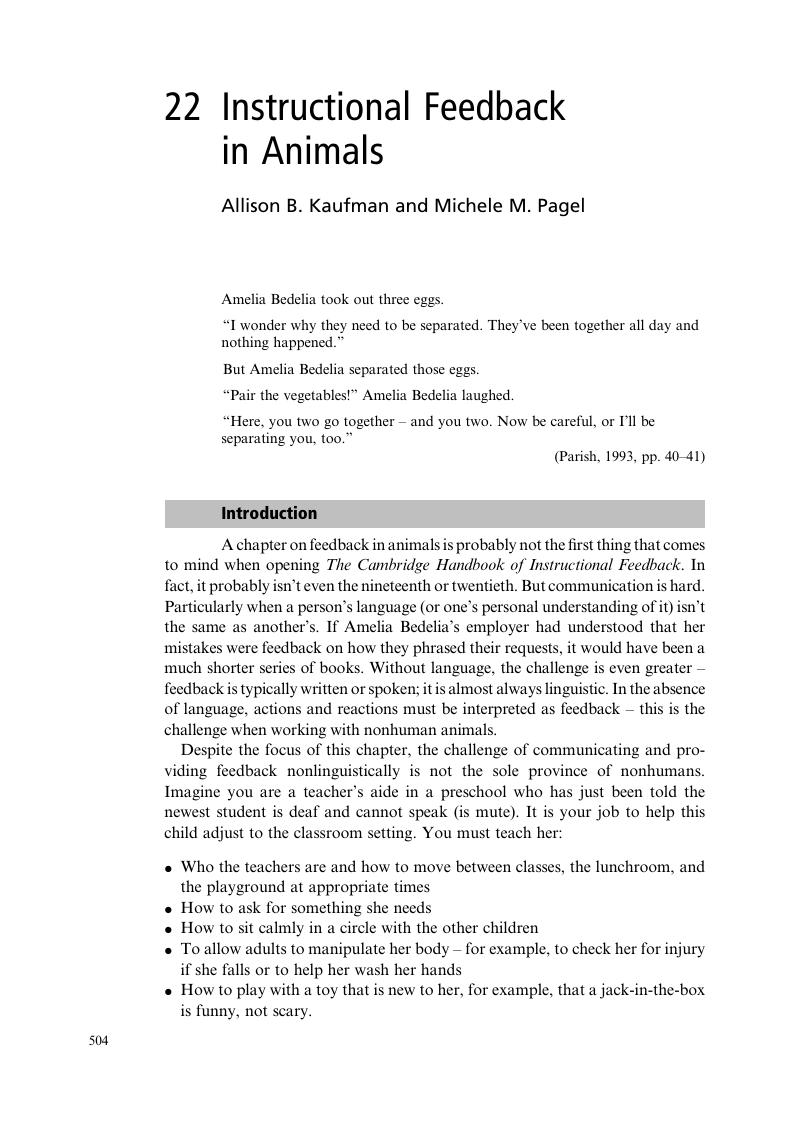Book contents
- The Cambridge Handbook of Instructional Feedback
- The Cambridge Handbook of Instructional Feedback
- Copyright page
- Contents
- Figures
- Tables
- Contributors
- Foreword
- Preface
- Acknowledgments
- Part I Theoretical Foundations
- Part II Domain-Specific Feedback
- Part III Contexts and Sources of Feedback
- 15 Technology-Enhanced Feedback
- 16 Digital Games as Tools for Embedded Assessment
- 17 Feedback in the Context of Self-Assessment
- 18 Providing Formative Peer Feedback
- 19 Feedback, Correctives, and the Use of Pre-Assessments
- 20 Teacher Expectations and Feedback Practices in South African Schools
- 21 Interactive Assessment
- 22 Instructional Feedback in Animals
- Part IV Student Responses to Feedback
- Part V Concluding Remarks
- Index
- References
22 - Instructional Feedback in Animals
from Part III - Contexts and Sources of Feedback
Published online by Cambridge University Press: 02 November 2018
- The Cambridge Handbook of Instructional Feedback
- The Cambridge Handbook of Instructional Feedback
- Copyright page
- Contents
- Figures
- Tables
- Contributors
- Foreword
- Preface
- Acknowledgments
- Part I Theoretical Foundations
- Part II Domain-Specific Feedback
- Part III Contexts and Sources of Feedback
- 15 Technology-Enhanced Feedback
- 16 Digital Games as Tools for Embedded Assessment
- 17 Feedback in the Context of Self-Assessment
- 18 Providing Formative Peer Feedback
- 19 Feedback, Correctives, and the Use of Pre-Assessments
- 20 Teacher Expectations and Feedback Practices in South African Schools
- 21 Interactive Assessment
- 22 Instructional Feedback in Animals
- Part IV Student Responses to Feedback
- Part V Concluding Remarks
- Index
- References
Summary

- Type
- Chapter
- Information
- The Cambridge Handbook of Instructional Feedback , pp. 504 - 516Publisher: Cambridge University PressPrint publication year: 2018
References
- 10
- Cited by



